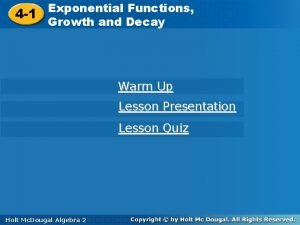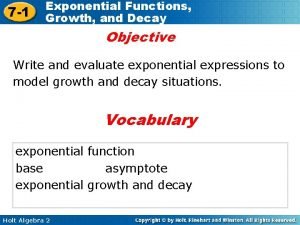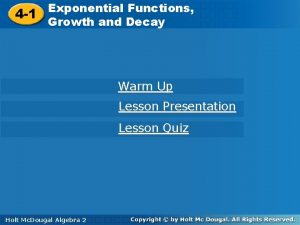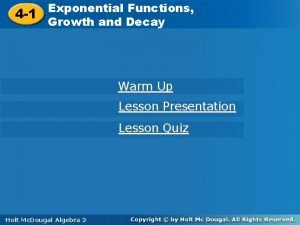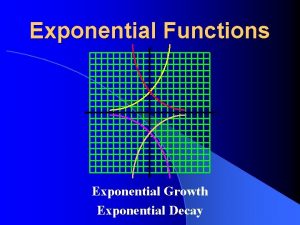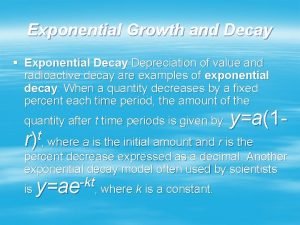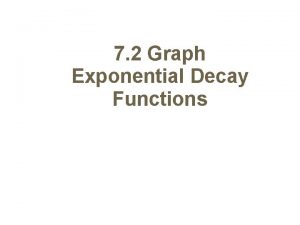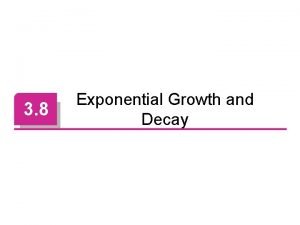Lesson 6 1 Exponential Growth and Decay Functions






- Slides: 6

Lesson 6. 1 Exponential Growth and Decay Functions Day 2 Learning Goal: (F. LE. A. 2, F. IF. C. 8 b, F. LE. B. 5) I can construct exponential functions given a description of a relationship. I can use properties of exponents to interpret expressions for exponential functions. I can interpret the parameters in an exponential function in terms of context. Essential Question: How can exponential functions be used to model real-life situations? Homework Discussion

Solving a Real-Life Problem Using Exponential Functions The value of a car y (in thousands of dollars) can be approximated by the model y = 25(0. 85)t, where t is the number of years since the car was new. a. Tell whether the model represents exponential growth or exponential decay. b. Identify the annual percent increase or decrease in the value of the car. c. Estimate when the value of the car will be $8000. (use technology)

Exponential Growth Model Exponential Decay Model a is the initial amount, r is the percent increase/decrease, t is the time period Example: Writing an Exponential Model In 2000, the world population was about 6. 09 billion. During the next 13 years, the world population increased by about 1. 18% each year. a. Write an exponential growth model giving the population y (in billions) t years after 2000. Estimate what the world population was in 2005. b. Estimate the year when the world population was 7 billion. c. If the world population continues to increase at this rate, estimate what the world population will be in 2025.

Example: Rewriting an Exponential Function The amount y (in grams) of the radioactive isotope chromium-51 remaining after t days is y = a(0. 5)t/28, where a is the initial amount (in grams). What percent of the chromium-51 decays each day?

Compound Interest interest paid on an initial amount (principal) AND on previously earned interest. if the interest is compounded more than once a year, then the exponential growth model has to be modified A: amount in account after t years P: the initial amount deposited r: the annual interest rate n: the number of times the interest is compounded per year t: the number of years Example: Finding the Balance in an Account You deposit $9000 in an account that pays 1. 46% annual interest. Find the balance after 3 years when the interest is compounded quarterly. WHAT IF? Find the balance after 3 years when the interest is compounded daily.

Exit Question: How can you determine if an exponential function represents a growth or decay? Practice to Strengthen Understanding Hmwk #2 BI p 300 -301 #21 -24, 27, 38


